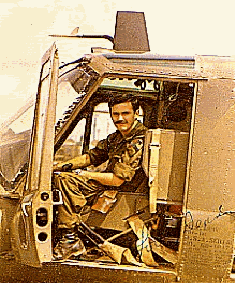Naval Aviator
On a carrier, the Naval Aviator looks over at the Catapult Officer
("Shooter") with his 20/40 vision who gives the run-up-engines
signal by rotating his middle finger above his head. The pilot pushes the throttle forward, verifies that all flight controls are operational, checks all gauges, and gives the Cat officer a brisk salute with his middle finger, continuing the Navy/Marine tradition of asking permission to leave the ship. The Cat officer drops to one knee while swooping his arm forward and pointing down deck with his middle finger, granting that permission. The pilot is immediately ejected while the plane is catapulted and becomes airborne.
Air Force Pilot
We've all seen Air Force pilots at any air force base look up just before taxiing for take-off, and the ground crew waits until the pilot's thumb is sticking straight up. The crew chief then confirms that he sees the thumb, salutes, and the Air Force pilot then takes off. This time-tested tradition is the last link in the Air Force safety net to confirm that the pilot does not have his thumb in his mouth or up his ass.
Army Aviator
If you've ever seen an Army helicopter pilot preparing for
takeoff, you will note that the pilot gives the ground guy a thumb up before he is given hover and takeoff signals. There are two theories about the origin of this gesture. One is that it is to show that the pilot has identified which of his fingers is the thumb so that he will be able to properly operate his controls. The most compelling theory says
that this is to show the ground crewman that the pilot indeed knows which direction is up
On a carrier, the Naval Aviator looks over at the Catapult Officer
("Shooter") with his 20/40 vision who gives the run-up-engines
signal by rotating his middle finger above his head. The pilot pushes the throttle forward, verifies that all flight controls are operational, checks all gauges, and gives the Cat officer a brisk salute with his middle finger, continuing the Navy/Marine tradition of asking permission to leave the ship. The Cat officer drops to one knee while swooping his arm forward and pointing down deck with his middle finger, granting that permission. The pilot is immediately ejected while the plane is catapulted and becomes airborne.
Air Force Pilot
We've all seen Air Force pilots at any air force base look up just before taxiing for take-off, and the ground crew waits until the pilot's thumb is sticking straight up. The crew chief then confirms that he sees the thumb, salutes, and the Air Force pilot then takes off. This time-tested tradition is the last link in the Air Force safety net to confirm that the pilot does not have his thumb in his mouth or up his ass.
Army Aviator
If you've ever seen an Army helicopter pilot preparing for
takeoff, you will note that the pilot gives the ground guy a thumb up before he is given hover and takeoff signals. There are two theories about the origin of this gesture. One is that it is to show that the pilot has identified which of his fingers is the thumb so that he will be able to properly operate his controls. The most compelling theory says
that this is to show the ground crewman that the pilot indeed knows which direction is up



